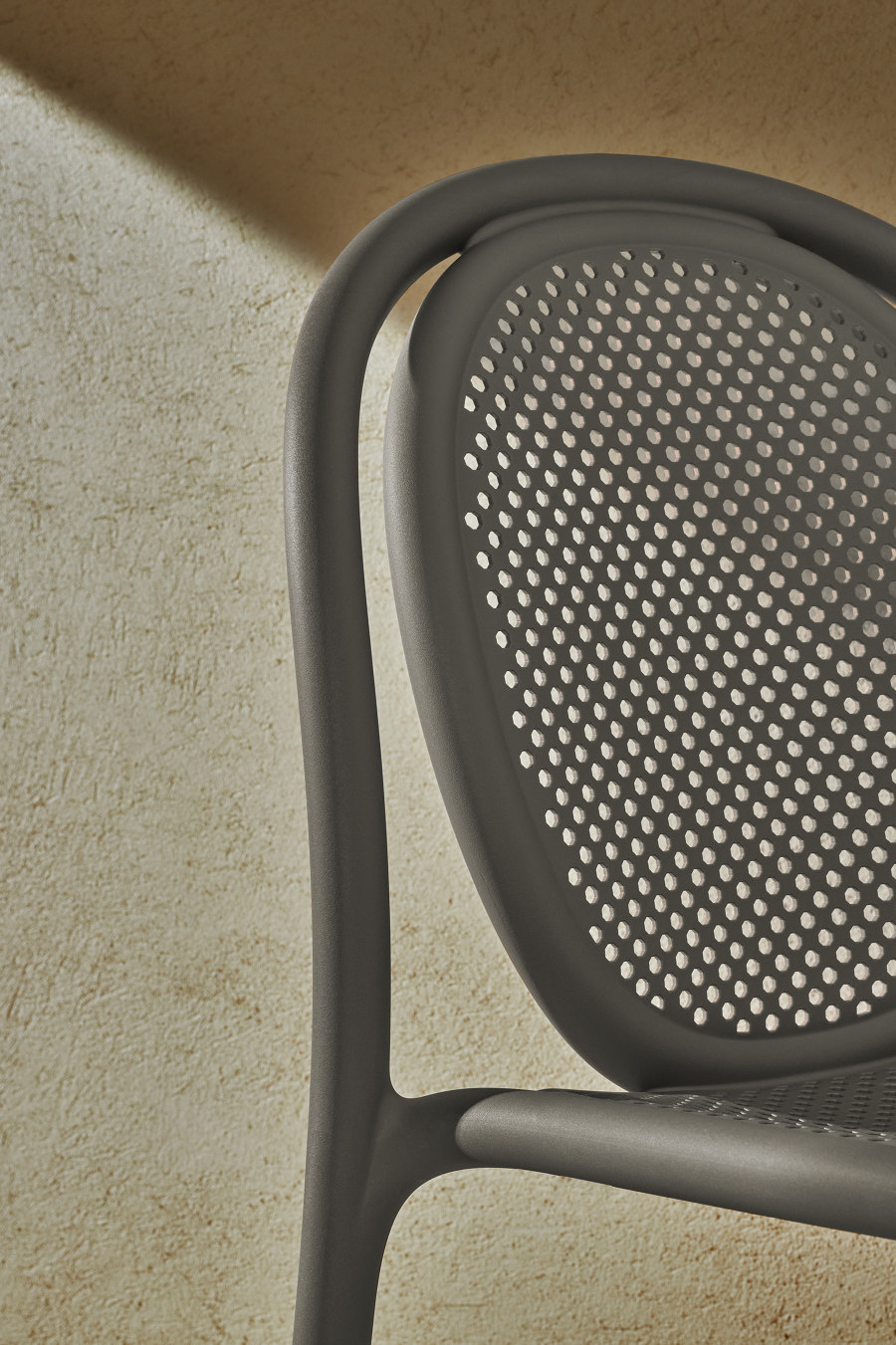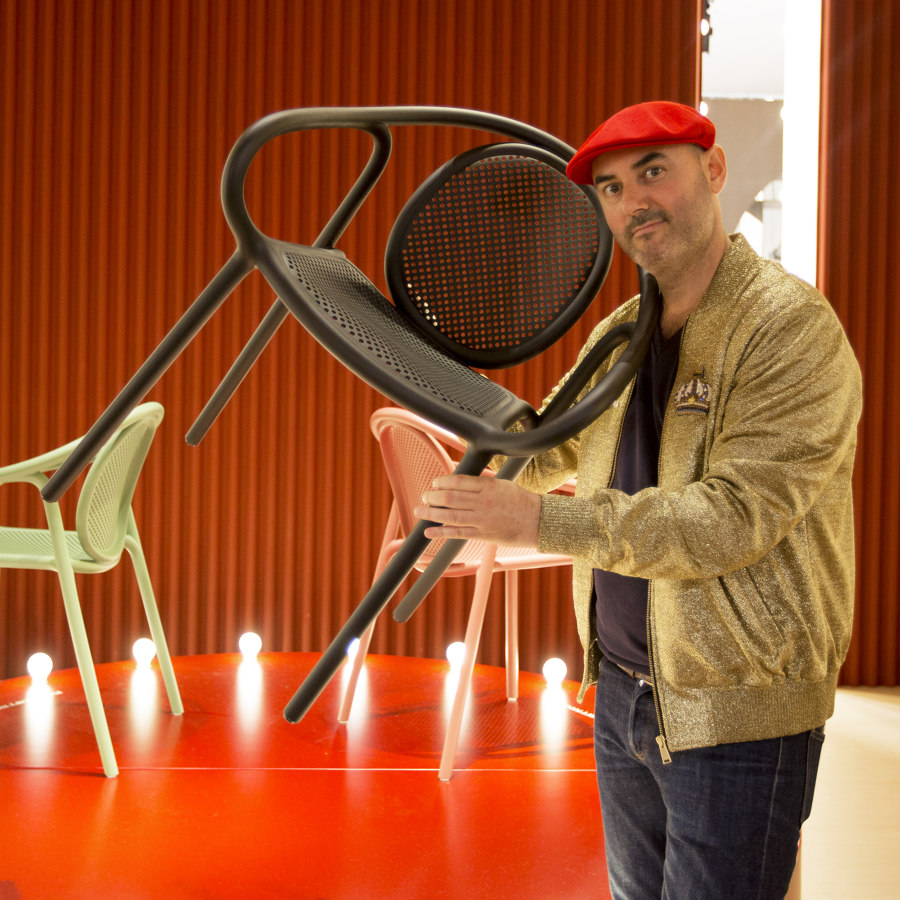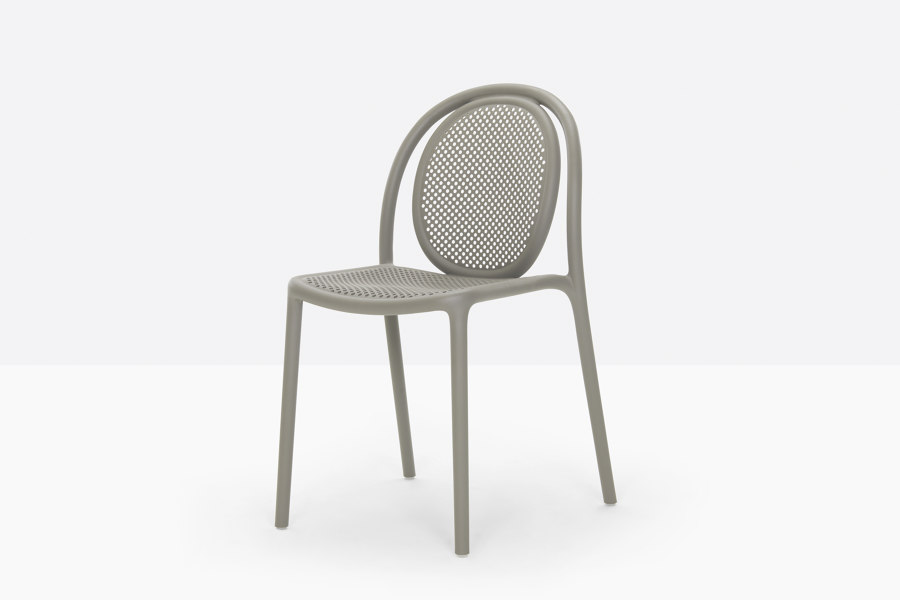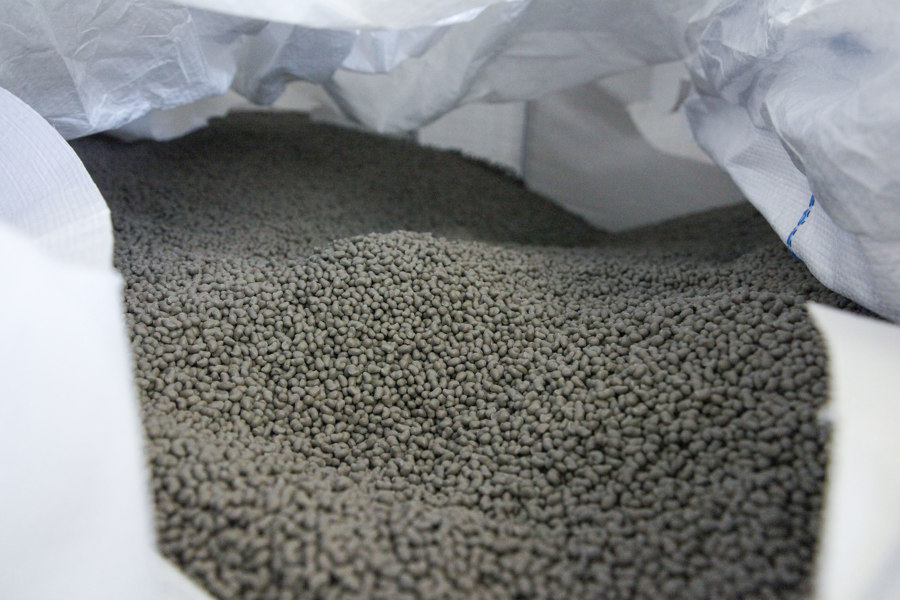The second coming: Pedrali's Remind chair goes 100% recycled
Brand story by Simon Keane-Cowell
MORNICO AL SERIO (BG), Italy
12.04.21
'It's never too late,' says Ibizan-born designer Eugeni Quitllet of the all-new Recycled Grey version of Pedrali's strong-selling Remind monobloc chair.
Eugeni Quitllet: 'We started trying these kinds of solutions ten years ago. At the time, people thought it was fun, a kind of experimental thing. Just for show. Now it’s for real'. Photo: Nacho Alegre

Eugeni Quitllet: 'We started trying these kinds of solutions ten years ago. At the time, people thought it was fun, a kind of experimental thing. Just for show. Now it’s for real'. Photo: Nacho Alegre
×The sound of birds tweeting is so remarkably clear, it’s as if I’m there.
But it’s not only the flawless audio of my WhatsApp call with Eugeni Quitllet that’s delivering this quasi-out-of-body experience. So evocative, so poetic is the award-winning, Ibizan-born industrial designer’s description of the Provence countryside as he walks and talks, it’s like I’m listening to a spot of expertly produced BBC nature programming.
Pedrali's monobloc Remind chair, authored by Ibizan-born designer Eugeni Quitllet and first launched as an armchair in 2018, undergoes a material transformation; it's now made entirely of recycled plastic waste. Photo: Andrea Garuti

Pedrali's monobloc Remind chair, authored by Ibizan-born designer Eugeni Quitllet and first launched as an armchair in 2018, undergoes a material transformation; it's now made entirely of recycled plastic waste. Photo: Andrea Garuti
בThis is what it’s all about,’ Quitllet says of France’s picture-perfect Lubéron region, where he and his family have been installed since the start of the pandemic. ‘This is what I want people to have at the end of the day. When you see and feel all this energy – the flowers, the sunlight, the breeze, the singing of the birds – all of that is also in the recycled materials that we use. It’s in the atoms you put inside. So, wherever you are in the world and you reach for the chair, this little light emerges from the product.’
'We can talk as much as we want, but we have to start to act. It’s the beginning of a new story. The Remind chair is now 100% recycled'
The chair in question is a new iteration of Quitllet’s 2018 Remind chair for premium Italian manufacturer Pedrali, where the polypropylene monobloc, with its bentwood-reminiscent silhouette, has undergone a radical material transformation. The original plastic has been replaced by a 100% recycled plastic mix, accompanied by a new, visually haptic, colour: recycled grey.
Visually and literally light: Remind features the sinuous curves of 19th-century bentwood chairs, reinterpreted in an innovative key. It also comes in a new colour for Pedrali – Recycled Grey. Photo: Patricia Parinejad

Visually and literally light: Remind features the sinuous curves of 19th-century bentwood chairs, reinterpreted in an innovative key. It also comes in a new colour for Pedrali – Recycled Grey. Photo: Patricia Parinejad
×Architonic: Why is this update, this evolution of the Remind chair necessary?
Eugeni Quitllet: It’s obvious. It’s absolutely obvious. This is how it should have been from the start. But it’s never too late. We started trying these kinds of solutions ten years ago. At the time people thought it was fun, a kind of experimental thing. Just for show. Now it’s for real. We can talk as much as we want, but we have to start to act. It’s the beginning of a new story. The Remind chair is now 100% recycled.
But it’s not just about the designers and the producers. The user, too, has to make their own step and choose well. The recycled-plastic version is a little bit more natural. It has a mix inside the material, which gives it a kind of stone effect. So, every chair is different. It’s a bit more wild.
'The consumer gets to see where all that plastic they use can go and relive it,' says Quitllet. 'Wherever you are in the world and you reach for the chair, this little light emerges from the product'

'The consumer gets to see where all that plastic they use can go and relive it,' says Quitllet. 'Wherever you are in the world and you reach for the chair, this little light emerges from the product'
×What was the process like of evolving the Remind chair for this new recycled-material iteration?
There is a slight difference when it comes to the chair’s engineering, which isn’t an extraordinary thing. This recycled plastic doesn’t have exactly the same mechanical characteristics as a new plastic, which is homogenous throughout the chair. The recycled material is a mix, a more irregular material, so you can have parts where, on a molecular level, it’s less connected. So, you need to ensure you have a good section at the right points, so it doesn’t break and passes all the robust testing it needs to undergo. Which it did.
Where is the recycled content sourced from?
It’s 50 and 50. Half recycled industrial material, which is quite normal. Nothing special there. But the other 50 per cent comes from rubbish. This is a real undertaking in terms of cleaning. Cleaning our cities and countryside, taking consumer waste out of the system and transforming it into an object of value. The consumer gets to see where all that plastic they use can go and relive it.
The new Remind chair is made from 50% post-consumer plastic waste and 50% waste plastic from industrial processes. 100% recycled, 'this is how it should have been from the start. But it’s never too late,' says Quitllet

The new Remind chair is made from 50% post-consumer plastic waste and 50% waste plastic from industrial processes. 100% recycled, 'this is how it should have been from the start. But it’s never too late,' says Quitllet
×What is your personal definition of sustainability?
I want objects to give their users a positive emotion permanently. I never want to design pieces that you get tired of visually or which themselves get tired physically, so you want to get rid of them. This is the first step: to use what you need and not change your style every day. And this isn’t just about plastic. To use wood on a large scale to produce good chairs, you need to fell large numbers of good, old trees. Maybe plastic in this case might be more ecological. It’s a very delicate balance.
'I want objects to give their users a positive emotion permanently. I never want to design pieces that you get tired of visually or which themselves get tired physically, so you want to get rid of them'
What opportunities does deploying more considered, more recycled materials offer you in your design praxis, and the design industry as a whole, in terms of form, in terms of process, and even in terms of aesthetics?
Everything goes together. New materials mean new processes and, as a result, new shapes. Take 3D printing, for example, which is very attractive. For me, every project I do is new. I start from zero. I try to find a specific solution at that particular moment. With fully recycled plastic, you have fewer colours available to you. That’s why we developed Recycled Grey. It’s a colour that reflects the new, fully recycled material that we’re working with.
But, at the end of the day, we use different technologies. It’s not just about the new. We still use fabric and wood, for example. This requires very little new technology. Basically, there are always good aspects and less good aspects to what we do. It’s ultimately a case of how you use it.
© Architonic






